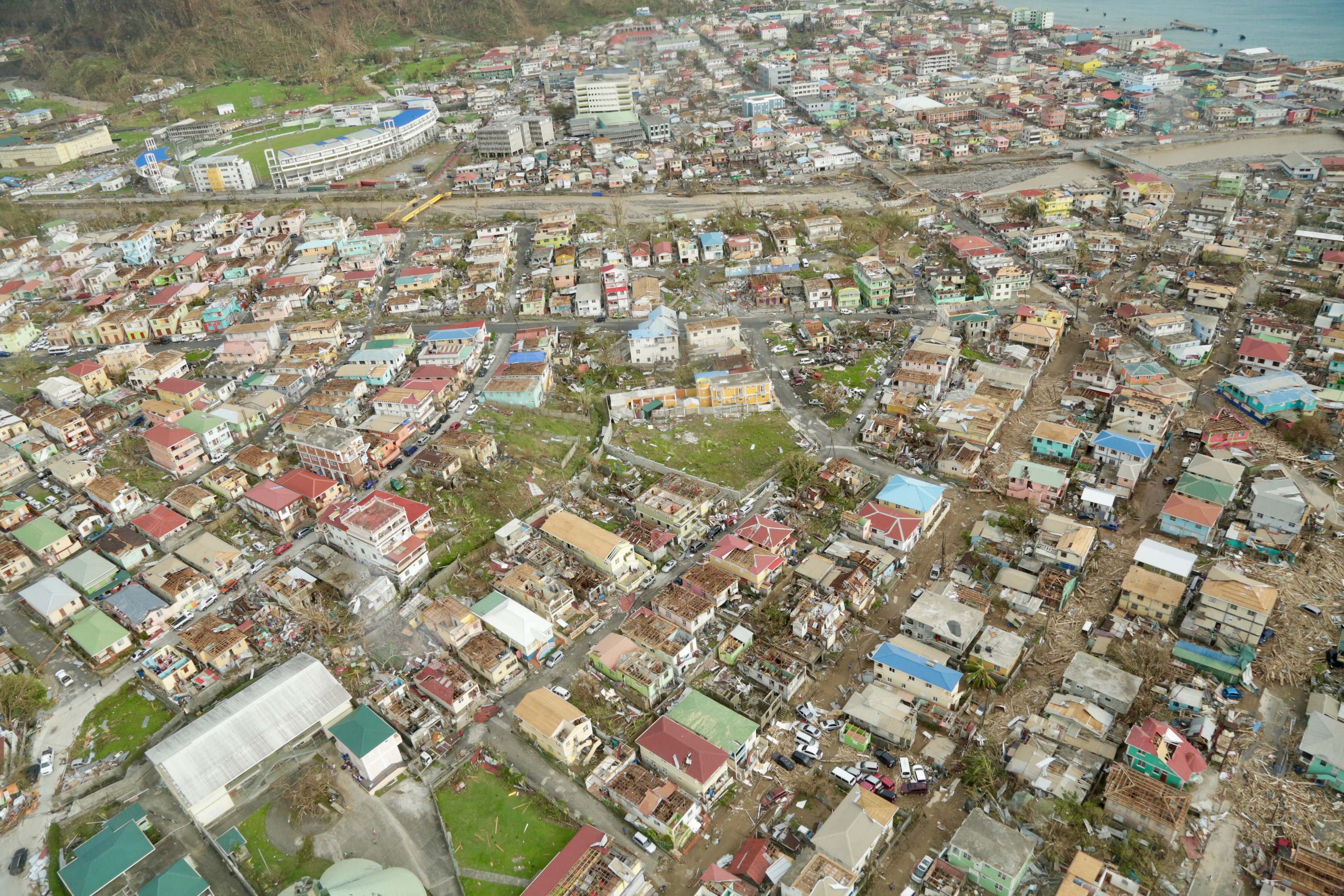‘We lost all what money can buy,’ Dominica leader says
Indigenous territory takes direct hit from the stormBy Mark Trahant
Trahant Reports
TrahantReports.Com The Kalinago Territory in Dominica took a direct hit from Hurricane Maria. The indigenous territory (formerly known as the Caribs) is on the remote eastern Atlantic side of the island. There have been no communications from the tribal community. The Caribbean Disaster Emergency Management Agency said Wednesday that it was using a helicopter to assess damage across the island nation: “Of particular concern for CDEMA was the Kalinago Territory between Castle Bruce and Atkinson where the houses are not particularly resilient.” Dominica’s Prime Minister Roosevelt Skerrit posted on his Facebook page: “Initial reports are of widespread devastation. So far we have lost all what money can buy and replace. My greatest fear for the morning is that we will wake to news of serious physical injury and possible deaths as a result of likely landslides triggered by persistent rains. “So, far the winds have swept away the roofs of almost every person I have spoken to or otherwise made contact with. The roof to my own official residence was among the first to go and this apparently triggered an avalanche of torn away roofs in the city and the countryside … We will need help, my friend, we will need help of all kinds.” Early relief efforts and supplies have been directed toward the island’s cities, mostly coming from Barbados. The International Red Cross reports: “Most of the main roads were impassable and several bridges were blocked or damaged. The provision of essential services (water, electricity) has been disrupted, and landline and mobile phone service is intermittent. The agricultural sector and consequently livelihoods has been significantly impacted due to crop losses. As of 1 September 2015, the National Emergency Operations Centre has confirmed 11 dead and 23 people have been reported missing. ”
Part 2: Video footage of #Dominica post #HurricaneMaria from the southeast around north of the Island.
Posted by CDEMA - Caribbean Disaster Emergency Management Agency on Wednesday, September 20, 2017
“A band of torrential rain caused by the system resulted in the 6 to 8 inches of rainfall in less than twelve hours and triggered massive flooding and several landslides,” according to the Red Cross. “Families have lost their homes to the damage incurred from flooding and landslides, which has also resulted in the loss of lives, personal belongings, and total destruction of subsistence crops.” Good Hope, a community just south of the Kalinago Territory, was “in dire need of water,” according to the Red Cross. The island’s capital is on the other side of the mountains from Kalinago Territory. Some 3,000 tribal members live in the territory. The tribe recently returned to its own name, instead of the one set by Spanish explorers, the Caribe. More than 70,000 people live on the island. Dominica was already recovering from another major storm, Erika, in 2015. Mark Trahant is the Charles R. Johnson Endowed Professor of Journalism at the University of North Dakota. He is an independent journalist and a member of The Shoshone-Bannock Tribes. Find him on Twitter @TrahantReports
Join the Conversation

